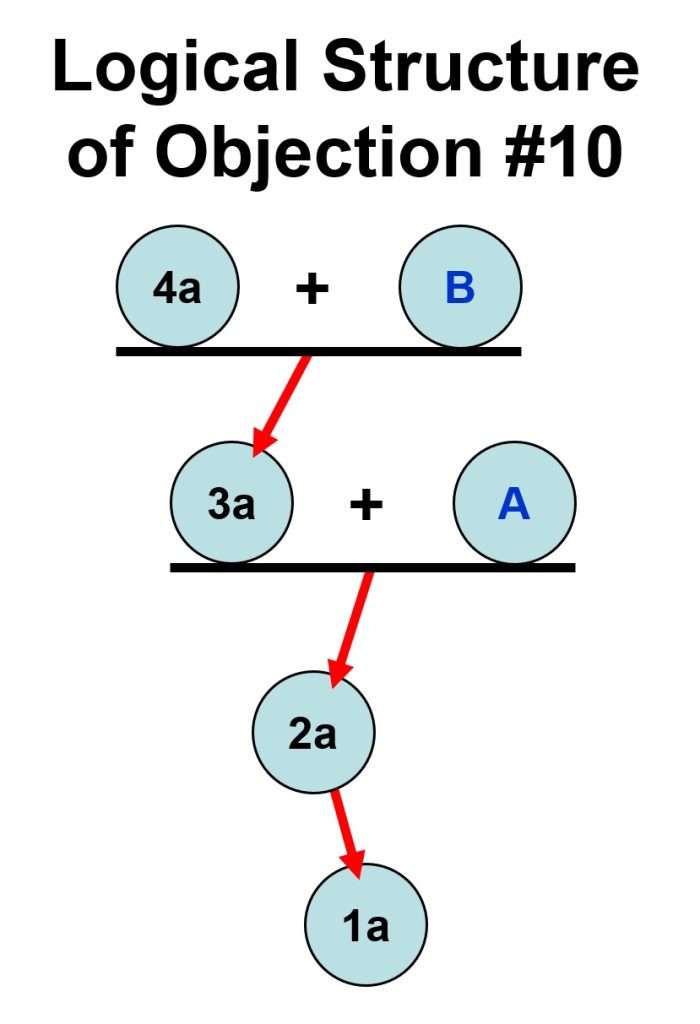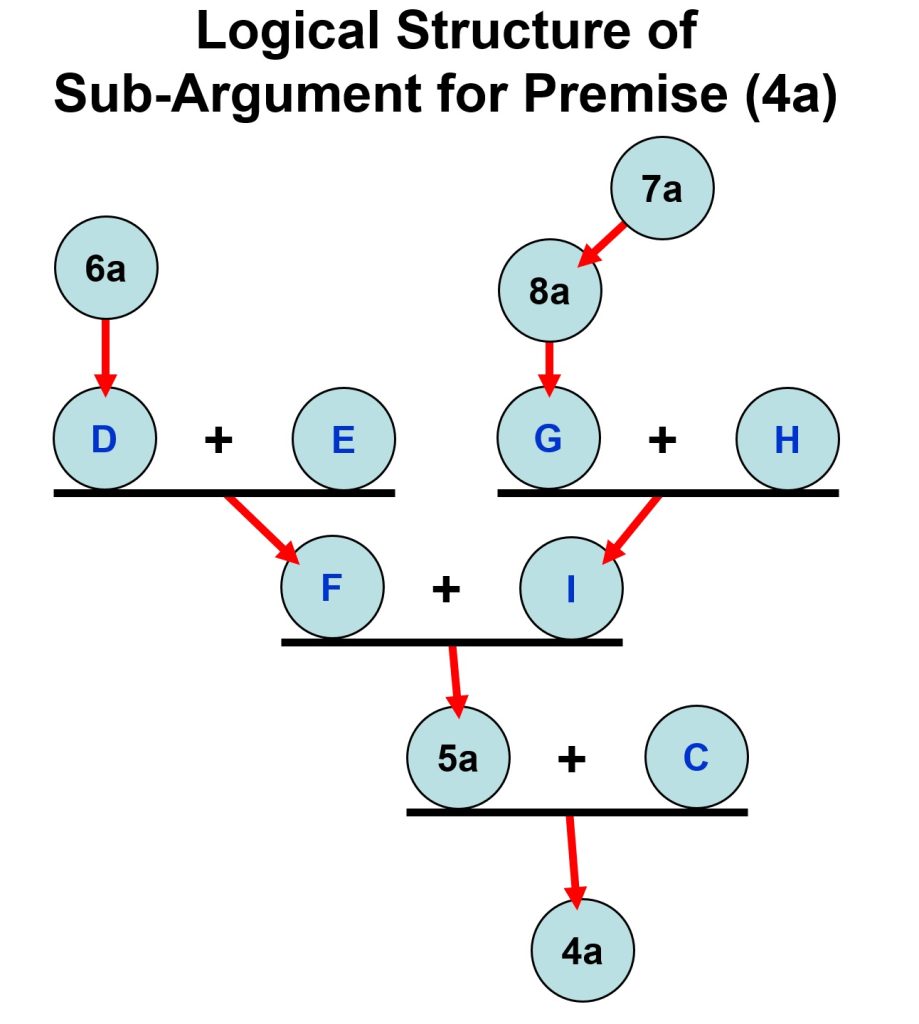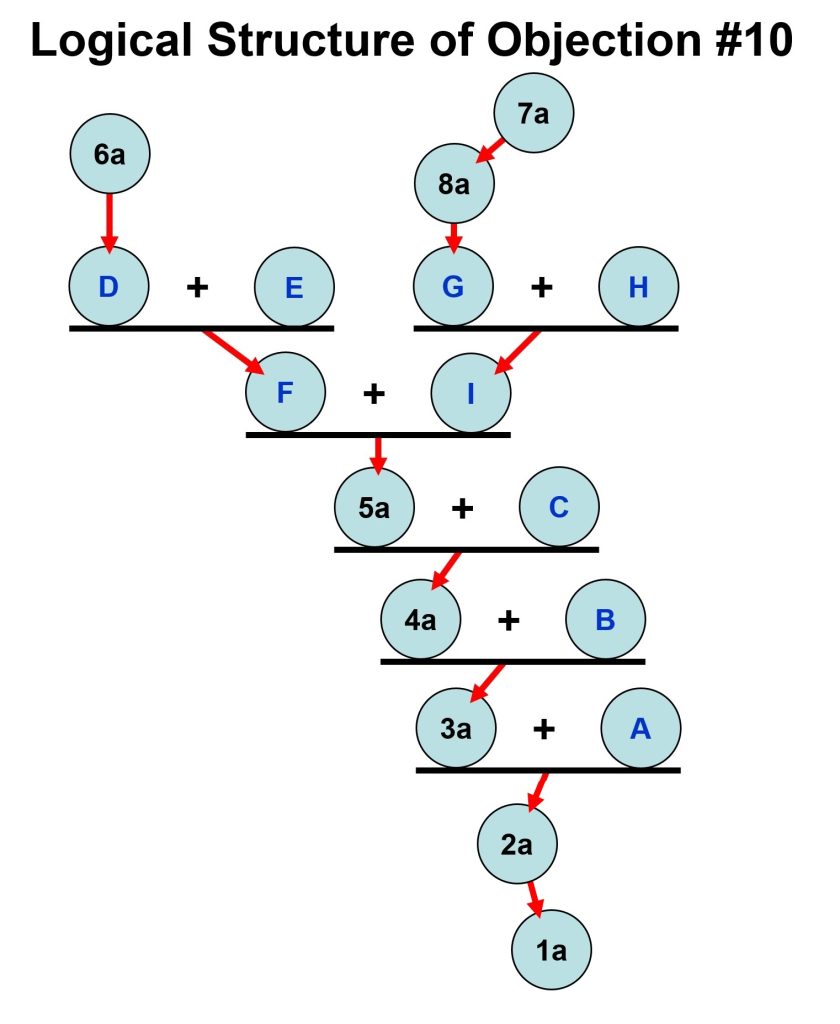Careful Analysis of Objections to the Swoon Theory: Objection #10 (Jewish Thought)
CRAIG’S OBJECTIONS TO SOME VERSIONS OF THE SWOON THEORY
In Reasonable Faith (3rd edition, 2008, hereafter: RF), the Christian apologist William Craig raises an objection against the Swoon Theory that is different than any of the nine objections raised by Peter Kreeft and Ronald Tacelli in their Handbook of Christian Apologetics. According to this objection, Jesus’ alleged resurrection was “contrary to Jewish thought” (RF, p.373).
Craig distinguishes between two types of versions of the Swoon Theory. Some versions of the Swoon Theory assert that the disciples had intentionally deceived others that Jesus had died on the cross:
Some versions of the Apparent Death Hypothesis [i.e. the Swoon Theory] are really variations on the Conspiracy Hypothesis, merely substituting the disciples’ hoaxing Jesus’ death for their stealing Jesus’ body. In such cases, the theory shares all the weaknesses of the Conspiracy Hypothesis.
RF, p.373
Other versions of the Swoon Theory do NOT claim that the disciples intentionally deceived others:
A non-conspiratorial version of the theory is also saddled with insuperable difficulties: how to explain the empty tomb, given Jesus’ merely apparent death, since a man sealed inside a tomb could not move the stone so as to escape; how to explain the post-mortem appearances, since as Strauss mused, the appearance of a half-dead man desperately in need of medical attention would hardly have elicited in them the conclusion that he was the Risen Lord and conqueror of Death; and how to explain the anachronism of the origin of the disciples’ belief in Jesus’ resurrection, since seeing him again would lead them to conclude that he had not died, not that he was, contrary to Jewish thought (as well as their own eyes), gloriously risen from the dead.
RF, p.373
Craig here raises three objections against non-conspiratorial versions of the Swoon Theory. The first objection corresponds to Objection #7 (Who Moved the Stone?) in Kreeft and Tacelli’s Handbook of Christian Apologetics. I have previously shown that Objection #7 FAILS so that the alleged problem is NOT an “insuperable difficulty” as Craig claims. Craig’s second objection corresponds to Objection #5 (Sickly Jesus) in Kreeft and Tacelli’s Handbook of Christian Apologetics. I have previously shown that Objection #5 FAILS so that alleged problem is NOT an “insuperable difficulty” either.
The third objection that Craig raises against non-conspiratorial versions of the Swoon Theory is based on the view that Jesus’ alleged resurrection is “contrary to Jewish thought.” This objection is different than any of the nine objections in the Handbook of Christian Apologetics. So, I will now carefully analyze this objection/argument against the Swoon Theory.
IDENTIFICATION STEPS
Here are the explicitly stated claims in Craig’s argument:
1. [A non-conspiratorial version of the Apparent Death Hypothesis is also saddled with insuperable difficulties]
[ : ]- this colon indicates that some “insuperable difficulties” (i.e. objections) are about to be stated:
2. […how to explain the anachronism of the origin of the disciples’ belief in Jesus’ resurrection…]
[since] – this word indicates that a reason supporting statement (2) is about to be given:
3. [seeing him again would lead them to conclude that he had not died, not that he was…gloriously risen from the dead.]
4. [it was contrary to Jewish thought that he was…gloriously risen from the dead.]
CLARIFICATION STEPS
I will now clarify the explicitly stated claims in Craig’s argument.
1. A non-conspiratorial version of the Apparent Death Hypothesis is also saddled with insuperable difficulties.
=>1a. Non-conspiratorial versions of the Swoon Theory have a serious problem that cannot be resolved.
2. …how to explain the anachronism of the origin of the disciples’ belief in Jesus’ resurrection…
=>2a. Non-conspiratorial versions of the Swoon Theory cannot explain why the eleven remaining disciples of Jesus came to believe that Jesus had gloriously risen from the dead.
3. Seeing him again would lead them to conclude that he had not died, not that he was…gloriously risen from the dead.
=>3a. Seeing Jesus alive after his crucifixion (around 30 CE) would lead the eleven remaining disciples of Jesus to believe that Jesus had not died on the cross, not that Jesus was…gloriously risen from the dead.
4. It was contrary to Jewish thought that he was…gloriously risen from the dead.
=>4a. It is contrary to 1st-century Jewish thought to believe that Jesus had died on the cross (around 30 CE) and then to believe that Jesus had gloriously risen from the dead (less than 48 hours later).
FILL IN STEPS
I will now make explicit any unstated assumptions/claims and inferences that are important to understanding Craig’s argument.
Adding a premise clarifies the inference from (3a) to (2a):
3a. Seeing Jesus alive after his crucifixion (around 30 CE) would lead the eleven remaining disciples to believe that Jesus had not died on the cross, not that Jesus was…gloriously risen from the dead.
A. According to non-conspiratorial versions of the Swoon Theory, the eleven remaining disciples of Jesus began to believe that Jesus was gloriously risen from the dead as a result of the eleven remaining disciples seeing Jesus alive after his crucifixion (around 30 CE).
THEREFORE:
2a. Non-conspiratorial versions of the Swoon Theory cannot explain why the eleven remaining disciples of Jesus came to believe that Jesus had gloriously risen from the dead.
Adding a premise also clarifies the inference from (4a) to (3a):
4a. It is contrary to 1st-century Jewish thought to believe that Jesus had died on the cross (around 30 CE) and then to believe that Jesus had gloriously risen from the dead (less than 48 hours later).
B. The primary influence on the religious beliefs of the remaining eleven disciples of Jesus was 1st-century Jewish thought.
THEREFORE:
3a. Seeing Jesus alive after his crucifixion (around 30 CE) would lead the eleven remaining disciples of Jesus to believe that Jesus had not died on the cross, not that Jesus was…gloriously risen from the dead.
DIAGRAMMING THE ARGUMENT
The final inference in this argument is from (2a) to (1a):
2a. Non-conspiratorial versions of the Swoon Theory cannot explain why the eleven remaining disciples of Jesus came to believe that Jesus had gloriously risen from the dead.
THEREFORE:
1a. Non-conspiratorial versions of the Swoon Theory have a serious problem that cannot be resolved.
I have previously identified a sub-argument for premise (2a), and that sub-argument includes premise (3a). I have also previously identified a sub-argument for premise (3a), so we now have a chain of arguments that can be displayed in an argument diagram:

A SUB-ARGUMENT IS NEEDED FOR PREMISE (4a)
The above argument will not work as it stands. Premise (4a) is NOT obviously true, so a reason or argument must be provided to show that (4a) is true. Later in the same chapter of Reasonable Faith, Craig discusses potential explanations for the origin of “the disciples’ belief in Jesus’ resurrection” (RF, p.390), and in that discussion, he argues that their belief was not the result of “the influence of Jewish beliefs.” (RF, p.390).
Craig’s argument supporting premise (4a) begins on page 392 and ends near the top of page 394, so it runs for over two pages. I will not quote the entire passage here, but I will quote the key claims that Craig makes in presenting this argument:
But the Jewish conception of the resurrection differed in at least two fundamental respects from the resurrection of Jesus. First, in Jewish thought the resurrection always occurred after the end of the world.
RF, p.392
Second, in Jewish thought, the resurrection was always the resurrection of all the righteous or all the people. They had no conception of the resurrection of an isolated individual.
RF, p.393
I will now carefully analyze this argument which is in support of premise (4a).
IDENTIFICATION STEPS
Here are the explicitly stated claims in the sub-argument for premise (4a):
5. [But the Jewish conception of the resurrection differed in at least two fundamental respects from the resurrection of Jesus.]
[First…] – this word indicates that one of the fundamental respects in which the Jewish conception of the resurrection differed from the resurrection of Jesus is about to be stated:
6. […in Jewish thought the resurrection always occurred after the end of the world.]
[Second…] – this word indicates that another of the fundamental respects in which the Jewish conception of the resurrection differed from the resurrection of Jesus is about to be stated:
7. […in Jewish thought, the resurrection was always the resurrection of all the righteous or all the people.]
8. [They had no conception of the resurrection of an isolated individual.]
CLARIFICATION STEPS
I will now clarify the explicitly stated claims in the sub-argument for (4a).
5. [But the Jewish conception of the resurrection differed in at least two fundamental respects from the resurrection of Jesus.]
=>5a. In 1st-century Jewish thought, the conception of the resurrection differed in at least two fundamental respects from the alleged resurrection of Jesus.
6. […in Jewish thought the resurrection always occurred after the end of the world.]
=>6a. In 1st-century Jewish thought, the resurrection always occurred after the end of the world.
7. […in Jewish thought, the resurrection was always the resurrection of all the righteous or all the people.]
=>7a. In 1st-century Jewish thought, the resurrection was always the resurrection of all the righteous or all the people.
8. [They had no conception of the resurrection of an isolated individual.]
=>8a. In 1st-century Jewish thought, there was no conception of the resurrection of an isolated individual.
FILL IN STEPS
First, we need to determine how the above argument connects with and supports premise (4a). It appears that premise (5a) is the primary reason, but an additional premise appears to clarify the sub-argument for (4a):
5a. In 1st-century Jewish thought, the conception of the resurrection differed in at least two fundamental respects from the alleged resurrection of Jesus.
C. IF the alleged resurrection of Jesus occurred, THEN Jesus died on the cross (around 30 CE) and then Jesus gloriously rose from the dead (less than 48 hours later).
THEREFORE:
4a. It is contrary to 1st-century Jewish thought to believe that Jesus had died on the cross (around 30 CE) and then to believe that Jesus had gloriously risen from the dead (less than 48 hours later).
Premise (5a) is supported by two sub-arguments. The first sub-argument includes premise (6a) and two unstated assumptions and an unstated intermediate conclusion:
6a. In 1st-century Jewish thought, the resurrection always occurred after the end of the world.
THEREFORE:
D. IF the alleged resurrection of Jesus involves Jesus gloriously rising from the dead BEFORE the end of the world, THEN in 1st-century Jewish thought, the resurrection differs in a fundamental respect from the alleged resurrection of Jesus (in terms of its timing relative to the end of the world).
E. The alleged resurrection of Jesus involves Jesus gloriously rising from the dead BEFORE the end of the world.
THEREFORE:
F. In 1st-century Jewish thought, the resurrection differs in a fundamental respect from the alleged resurrection of Jesus (in terms of its timing relative to the end of the world).
Here is the other sub-argument supporting premise (5a):
7a. In 1st-century Jewish thought, the resurrection was always the resurrection of all the righteous or all the people.
THEREFORE:
8a. In 1st-century Jewish thought, there was no conception of the resurrection of an isolated individual.
THEREFORE:
G. IF the alleged resurrection of Jesus involves the resurrection of Jesus as an isolated individual, THEN in 1st-century Jewish thought, the resurrection differs in a fundamental respect from the alleged resurrection of Jesus (in terms of how many others were resurrected at the same time).
H. The alleged resurrection of Jesus involves the resurrection of Jesus as an isolated individual.
THEREFORE:
I. In 1st-century Jewish thought, the resurrection differs in a fundamental respect from the alleged resurrection of Jesus (in terms of how many others were resurrected at the same time).
Premises (F) and (I) combine to form the core argument for premise (5a):
F. In 1st-century Jewish thought, the resurrection differs in a fundamental respect from the alleged resurrection of Jesus (in terms of its timing relative to the end of the world).
I. In 1st-century Jewish thought, the resurrection differs in a fundamental respect from the alleged resurrection of Jesus (in terms of how many others were resurrected at the same time).
THEREFORE:
5a. In 1st-century Jewish thought, the conception of the resurrection differed in at least two fundamental respects from the alleged resurrection of Jesus.
DIAGRAMMING THE SUB-ARGUMENT FOR PREMISE (4a)
Now we can diagram the sub-argument supporting the key premise (4a).

DIAGRAM OF THE FULL ARGUMENT CONSTITUTING OBJECTION #10
We can now combine my analysis and diagram of the sub-argument for premise (4a) with my initial analysis and diagram of Objection #10 (Jewish Thought) against the Swoon Theory to form a diagram of the full argument for Objection #10.

STATED CLAIMS OF OBJECTION #10
1a. Non-conspiratorial versions of the Swoon Theory have a serious problem that cannot be resolved.
2a. Non-conspiratorial versions of the Swoon Theory cannot explain why the eleven remaining disciples of Jesus came to believe that Jesus had gloriously risen from the dead.
3a. Seeing Jesus alive after his crucifixion (around 30 CE) would lead the eleven remaining disciples of Jesus to believe that Jesus had not died on the cross, not that Jesus was…gloriously risen from the dead.
4a. It is contrary to 1st-century Jewish thought to believe that Jesus had died on the cross (around 30 CE) and then to believe that Jesus had gloriously risen from the dead (less than 48 hours later).
5a. In 1st-century Jewish thought, the conception of the resurrection differed in at least two fundamental respects from the alleged resurrection of Jesus.
6a. In 1st-century Jewish thought, the resurrection always occurred after the end of the world.
7a. In 1st-century Jewish thought, the resurrection was always the resurrection of all the righteous or all the people.
8a. In 1st-century Jewish thought, there was no conception of the resurrection of an isolated individual.
UNSTATED ASSUMPTIONS/CLAIMS OF OBJECTION #10
A. According to non-conspiratorial versions of the Swoon Theory, the eleven remaining disciples of Jesus began to believe that Jesus was gloriously risen from the dead as a result of the eleven remaining disciples seeing Jesus alive after his crucifixion (around 30 CE).
B. The primary influence on the religious beliefs of the eleven remaining disciples of Jesus was 1st-century Jewish thought.
C. IF the alleged resurrection of Jesus occurred, THEN Jesus died on the cross (around 30 CE) and then Jesus gloriously rose from the dead (less than 48 hours later).
D. IF the alleged resurrection of Jesus involves Jesus gloriously rising from the dead BEFORE the end of the world, THEN in 1st-century Jewish thought, the resurrection differs in a fundamental respect from the alleged resurrection of Jesus (in terms of its timing relative to the end of the world).
E. The alleged resurrection of Jesus involves Jesus gloriously rising from the dead BEFORE the end of the world.
F. In 1st-century Jewish thought, the resurrection differs in a fundamental respect from the alleged resurrection of Jesus (in terms of its timing relative to the end of the world).
G. IF the alleged resurrection of Jesus involves the resurrection of Jesus as an isolated individual, THEN in 1st-century Jewish thought, the resurrection differs in a fundamental respect from the alleged resurrection of Jesus (in terms of how many others were resurrected at the same time).
H. The alleged resurrection of Jesus involves the resurrection of Jesus as an isolated individual.
I. In 1st-century Jewish thought, the resurrection differs in a fundamental respect from the alleged resurrection of Jesus (in terms of how many others were resurrected at the same time).
